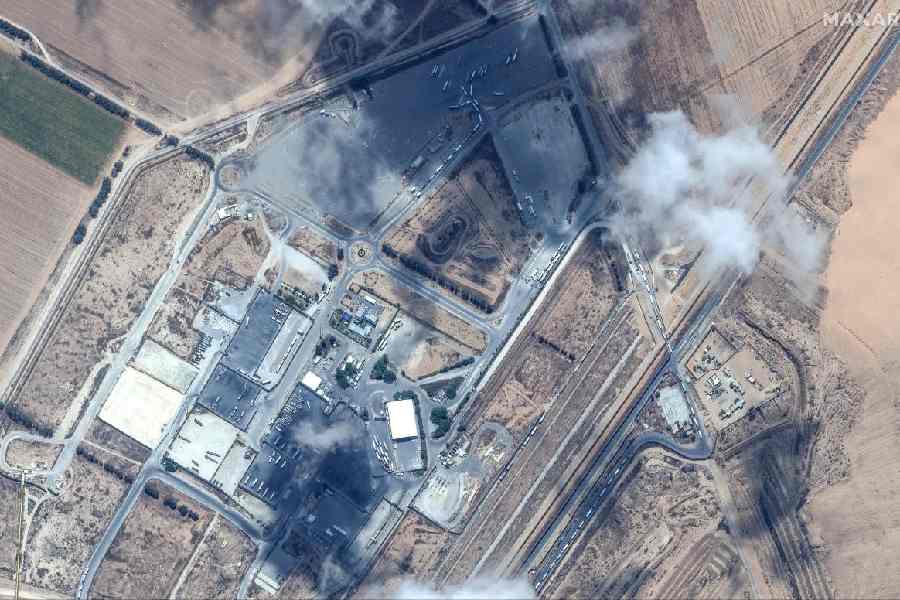The armed convoy of jeeps filled with reporters rumbled into a dusty Rafah, passing flattened houses and battered apartment buildings.
As we dismounted our Humvees, a stillness gripped this swath of southern Gaza, near the border with Egypt. Slabs of concrete and twisted rebar dotted the scarred landscape. Kittens darted through the wreckage.
Streets once bustling with life were now a maze of rubble. Everyone was gone.
More than a million people have fled to avoid an Israeli onslaught that began two months ago. Many have been displaced repeatedly and now live in tent cities that stretch for miles, where they face an uncertain future as they mourn the loss of loved ones.
As Israel says it is winding down its operation against Hamas in Rafah, the Israeli military invited foreign journalists into the city on a supervised visit. The military says that it has fought with precision and restraint against Hamas fighters embedded in civilian areas.
But the death, destruction and mass displacement of civilians have left Israel increasingly isolated diplomatically.
More than 37,000 Palestinians have died in the conflict, according to the Gazan health ministry. Although that figure does not distinguish between civilians and Hamas fighters, it includes the dozens killed in May when Israel dropped a pair of 250-pound bombs on a tent camp in Rafah.
Prime Minister Benjamin Netanyahu of Israel has placed the number of Palestinian dead at about 30,000 and said that about half were civilians.
The Israeli invasion was intended to destroy Hamas and free its hostages. So far, it has accomplished neither.
By the military’s count, it has killed at least 900 members of the Hamas brigade in Rafah and 15,000 Hamas fighters overall.
But three months afterNetanyahu declared that “total victory is within reach”, the military acknowledges that the Rafah siege has eliminated only one-third of Hamas’s brigade. Hamas’s leadership remains intact. And roughly 120 hostages are believed to remain somewhere in Gaza, although about a third are thought to be dead.
Palestinians who fled the city have no idea when they will return and what they will find when they do. Marwan Shaath, 57, said he and his family had left behind their three-story home. “It was meant to be the family home for generations to come,” he said in an interview. His friends have sent him pictures of what is left. “It is badly hit. Half of it is down already. No walls, no windows and big parts of it were burned.”
The fighting in Rafah has been intense, Israeli officials said, with Hamas laying hundreds of booby traps. Officials showed us a video that they said showed a home outfitted with 50-gallon drinking-water tanks stuffed with remote-controlled explosives.
The military supervised our visit to Rafah. We had to stay with the convoy, although Israeli officials did not review or censor our work. A representative of Hamas did not respond to text messages seeking comment.
New York Times News Service











